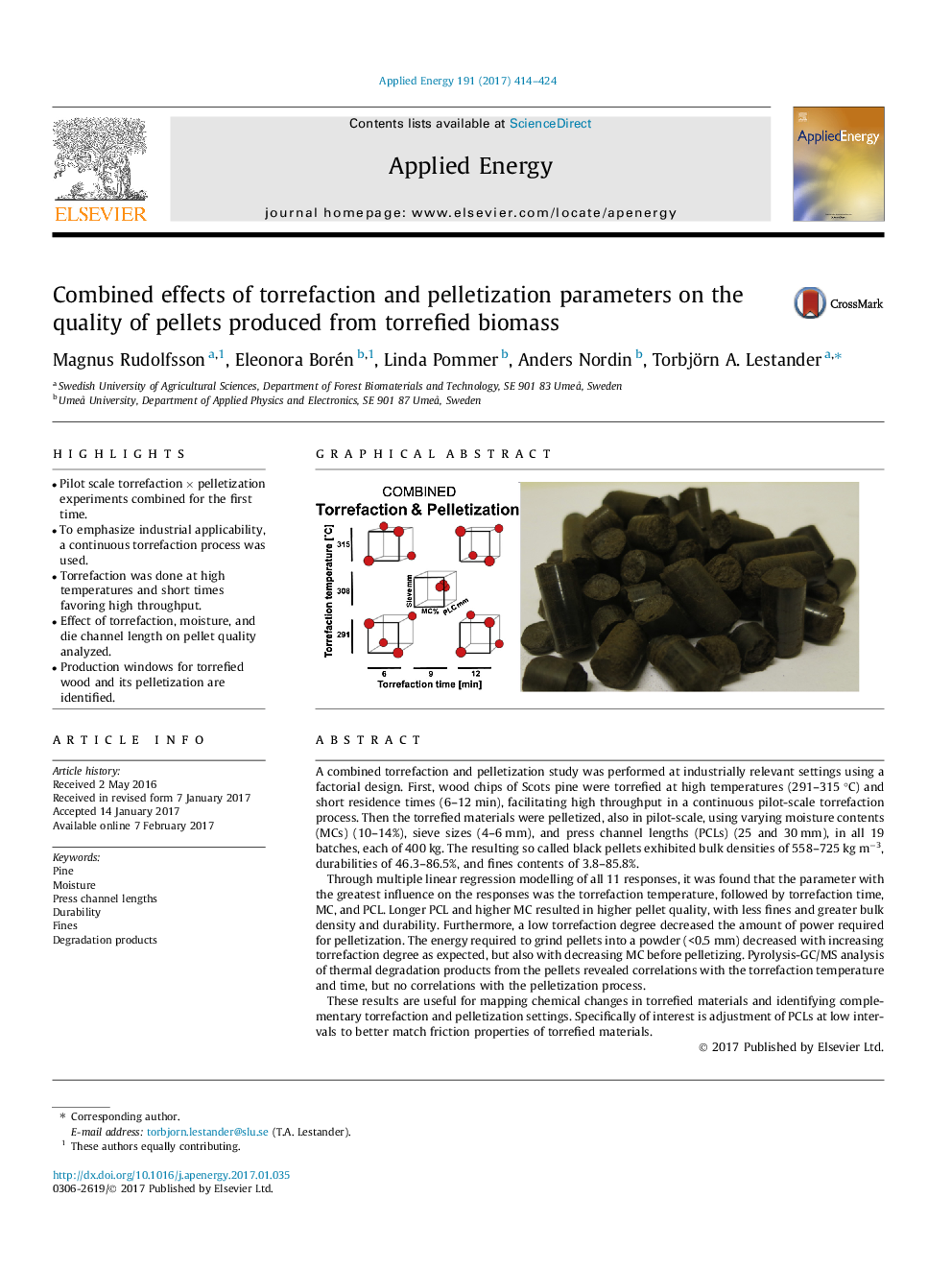| کد مقاله | کد نشریه | سال انتشار | مقاله انگلیسی | نسخه تمام متن |
|---|---|---|---|---|
| 6478765 | 1428099 | 2017 | 11 صفحه PDF | دانلود رایگان |
- Pilot scale torrefaction Ã pelletization experiments combined for the first time.
- To emphasize industrial applicability, a continuous torrefaction process was used.
- Torrefaction was done at high temperatures and short times favoring high throughput.
- Effect of torrefaction, moisture, and die channel length on pellet quality analyzed.
- Production windows for torrefied wood and its pelletization are identified.
A combined torrefaction and pelletization study was performed at industrially relevant settings using a factorial design. First, wood chips of Scots pine were torrefied at high temperatures (291-315 °C) and short residence times (6-12 min), facilitating high throughput in a continuous pilot-scale torrefaction process. Then the torrefied materials were pelletized, also in pilot-scale, using varying moisture contents (MCs) (10-14%), sieve sizes (4-6 mm), and press channel lengths (PCLs) (25 and 30 mm), in all 19 batches, each of 400 kg. The resulting so called black pellets exhibited bulk densities of 558-725 kg mâ3, durabilities of 46.3-86.5%, and fines contents of 3.8-85.8%.Through multiple linear regression modelling of all 11 responses, it was found that the parameter with the greatest influence on the responses was the torrefaction temperature, followed by torrefaction time, MC, and PCL. Longer PCL and higher MC resulted in higher pellet quality, with less fines and greater bulk density and durability. Furthermore, a low torrefaction degree decreased the amount of power required for pelletization. The energy required to grind pellets into a powder (<0.5 mm) decreased with increasing torrefaction degree as expected, but also with decreasing MC before pelletizing. Pyrolysis-GC/MS analysis of thermal degradation products from the pellets revealed correlations with the torrefaction temperature and time, but no correlations with the pelletization process.These results are useful for mapping chemical changes in torrefied materials and identifying complementary torrefaction and pelletization settings. Specifically of interest is adjustment of PCLs at low intervals to better match friction properties of torrefied materials.
96
Journal: Applied Energy - Volume 191, 1 April 2017, Pages 414-424
